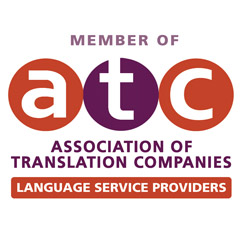Introduction
In today’s digital world, international visibility is essential. To achieve it, translating content isn’t enough. You need to combine translation and SEO. This strategy helps you rank in multiple languages and reach your global audience more effectively. But how can you do it properly?

Why Is SEO Translation Important?
When you translate your website, you do more than switch words. You adapt messages to a new audience. However, without SEO, your translated content won’t generate traffic. Search engines prioritize optimized content. That’s why combining translation and SEO becomes so crucial.
Translation vs. Localization with SEO
Many people think translation is enough. However, that’s not true. Localization takes things further. It adapts not only language but also cultural context. For example, a popular term in Spain might not work in Mexico. And search queries vary by region.
Therefore, you need more than direct translation. You must research what your target audience actually searches for. This ensures your site appears among the top search results.
Keyword Research and Adaptation
Choosing the right keywords makes a huge difference. Translated keywords don’t always perform the same way. Sometimes, a popular English keyword has no exact match in another language. That’s why local keyword research is essential.
Fortunately, tools like Ubersuggest, SEMrush, and Ahrefs can help. They allow you to find top-performing terms by language and location. This ensures your content is always relevant.
Multilingual Technical SEO
Just having translated content won’t help if Google can’t identify it correctly. You need to implement hreflang tags. These tags tell search engines which version of your content fits each language or region.
Moreover, separate URLs for each language help. A good structure looks like this:
- domain.com/es/
- domain.com/en/
- domain.com/fr/
This structure improves indexing and makes each version clear to search engines.
Natural, Relevant Content
Literal translation often sounds unnatural. That drives readers away. It’s much better to use professional translators who adapt tone and meaning. When your content flows well, readers stay longer.
Short sentences and transition words improve readability. A better reading experience keeps visitors engaged. As a result, Google rewards your page with higher rankings.
Avoid Duplicate Content
Poor translation can lead to duplicate content. That harms your SEO. To avoid this, every language version must offer unique value. Use synonyms, change sentence structures, and add cultural references. This keeps your content fresh and useful.
Why You Need the Right Team
Strong SEO requires more than tools. It needs experts who understand language, culture, and digital marketing. Specialized agencies offer this full package. They provide native translators, SEO copywriters, and technical support.
This combined expertise ensures that your translated content doesn’t just inform. It attracts, persuades, and converts.
Link Building and Social Media Strategies
Ranking in other languages takes more than great writing. You also need backlinks from local websites. So, consider doing outreach in your target regions. This boosts your domain authority.
In addition, social media can amplify your reach. Sharing in the right language engages more users. It also strengthens your global brand presence.
Conclusion
Translation and SEO must work together. Only then can you build an effective international presence. It’s not just about words, it’s about connection. That’s why you need research, localization, and the right people.
With the right strategy, you’ll rank in multiple languages. You’ll drive more traffic and grow your business globally. In short, SEO translation opens your doors to the world.
Finally, if you need more information visit How to Guarantee the Confidentiality of Your Documents?



